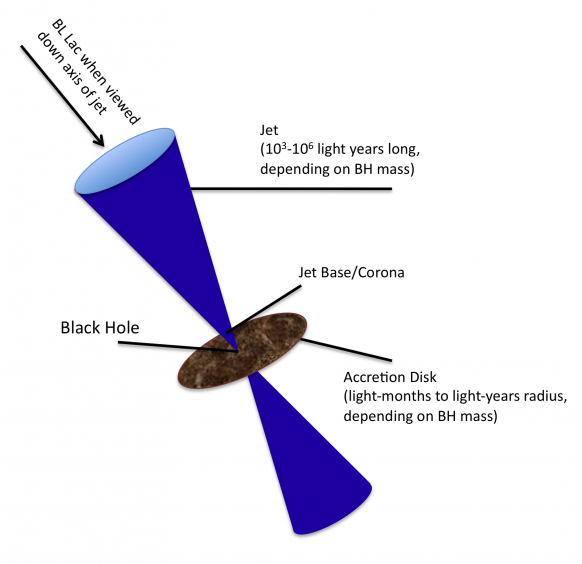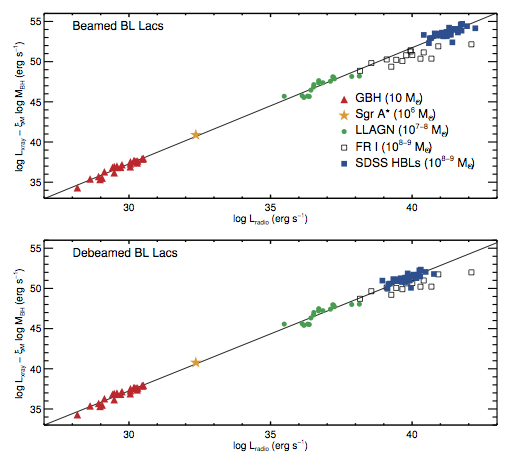BHBs
Most accretion-powered relativistic jet sources in our Galaxy are transient X-ray binaries. Efforts to coordinate multiwavelength observations of these objects have improved dramatically over the last decade. Now the challenge is to interpret broadband spectral energy distributions of XRBs that are well sampled in both wavelength and time. With these coordinated campaigns it is now possible to isolate and study the evolution of the jets via their broadband spectra. As BHBs perform outbursts they undergo state transitions, during which the jet spectra dramatically evolve, disappear and reappear again. At some stages of an outburst the jet may dominate the radiative (as well as kinetic) output in some of these systems. In addition, rapid variability and polarization are detected from the inner regions of the jet close to where it is formed and accelerated. These empirical results provide essential constraints for models of both the jet formation process and the physical properties of the jet such as the magnetic field and total jet power.
AGN
We also study a special type of AGN called blazars, where we are viewing an AGN with jets very nearly along the axis of the jets (see figure). Blazars are very rare because their “on-axis” orientation is rather special. Only a few thousand blazars are known in the entire sky, compared to the millions of AGN that have so far been discovered. Although exotic, blazars allow great insight into the physics of relativistic jets. The main reason is that the radiating particles in blazar jets are moving very close to the speed of light along our line of sight. As a consequence, non-thermal electromagnetic radiation from their jets appears very bright, and blazars often provide very “clean” probes of jet emission from SMBHs. Our group is involved in assembling blazar samples from large multiwavelength sky surveys, and we have shown that low-luminosity blazars host the most massive central black holes that occupy a relatively narrow range in black hole mass (about 100 million to 1 billion times the mass of the Sun). We are using these blazars in conjunction with XRBs and AGN with lower black hole masses to test the role of black hole mass on the multiwavelength emission from accreting black holes.

Figure – Schematic of AGN components and geometry: black hole, accretion disk, jet base/corona and jets.
The Fundamental Plane of Black Hole Activity: Comparing the Small and Big
The group is also investigating the fundamental plane of black hole activity, a correlation between black hole mass, radio luminosity, and X-ray luminosity across the entire black hole mass scale (Merloni, Heinz & di Matteo 2003; Falcke, Körding & Markoff 2004). The fundamental plane suggests that, at least for low-accretion rate black holes, the physical processes regulating how much of the accretion inflow is transformed into radiation is universal. Our work supports that BHBs and AGN indeed share similar accretion physics at low accretion rates in general. However, there is some scatter about the best-fit fundamental plane correlation, indicating that the accretion processes are very similar, but not identical, from black hole to black hole. Our most recent work on the fundamental plane has focused on applying advanced statistical methods to infer very reliable slopes, considering only low-accretion rate black holes, to better quantify how similar accretion physics really is for different black hole masses.


